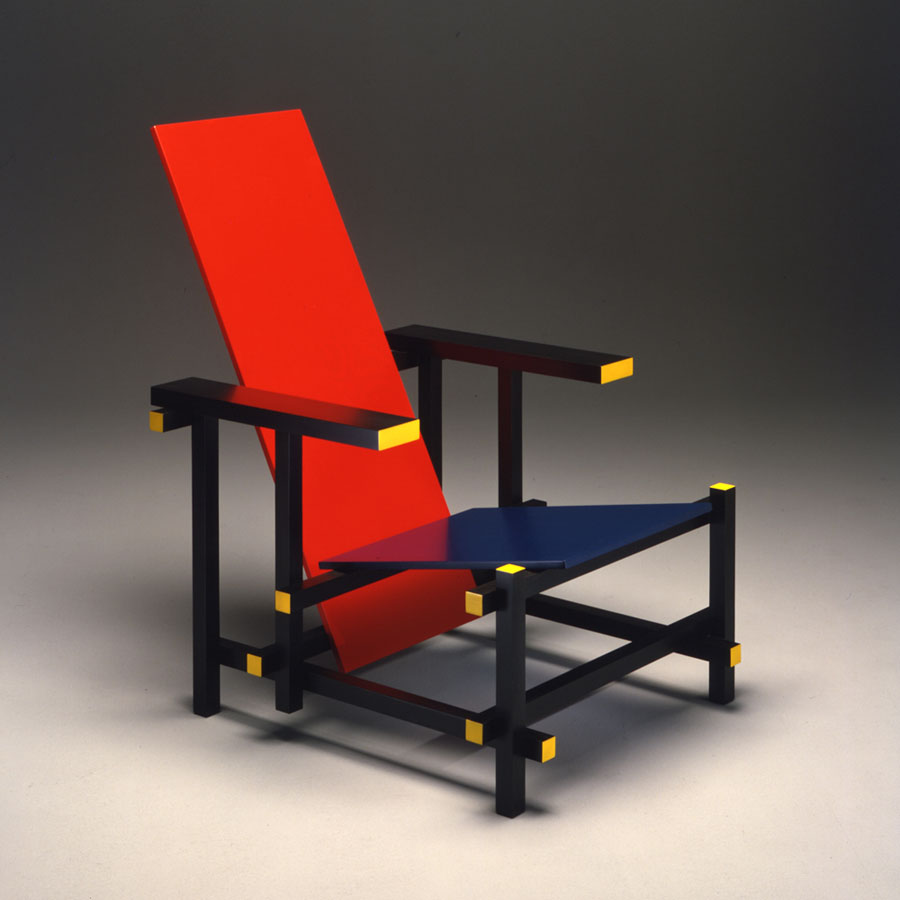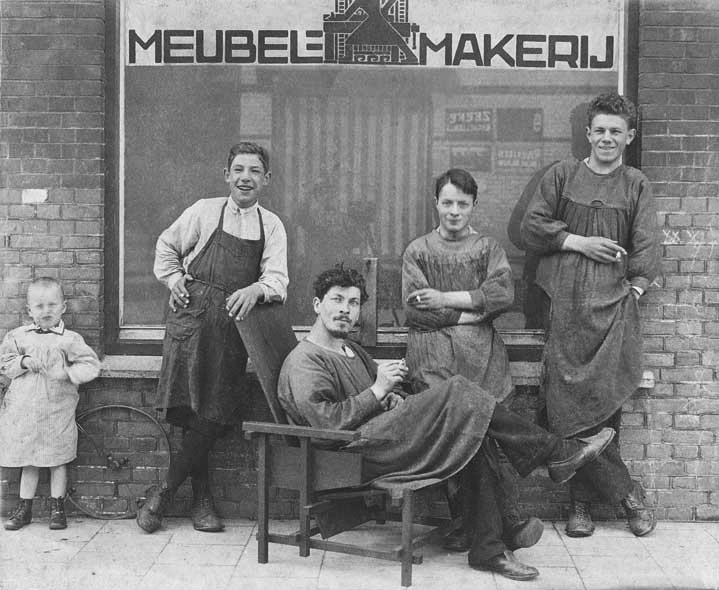By Anthony Romeo, AIA
In 1918, the architect Gerrit Thomas Rietveld designed a chair that affected not only furniture design, but the history of architecture. Rietveld’s Red and Blue Chair is now in the collection of the Museum of Modern Art, and it is a chair I love.

As art, it answers a big question in every person’s life: how can we have both energy and repose at once? Eli Siegel, the great American poet, critic, and founder of the education, Aesthetic Realism, asks, in his Fifteen Questions of 1955: “Is Beauty the Making One of Opposites?“ And, in his “Comment on the Relation of Life to the Fifteen Opposites,” of 1964, he wrote:
The opposites that as living beings we are most interested in, perhaps, are tranquillity and excitement, or repose and stir. Tranquillity or repose by itself is boredom, uselessness. Excitement or stir by itself is uncertainty, sloppiness, fidgetiness, indecisiveness, the plague of unwilling motion. Tranquillity and excitement are one in all art. When they exist together in a person, that person is happy.
The fact that I can learn from the beautiful design of this chair about myself is something I am particularly grateful for, because I once had a very hard time sitting still in a chair and feeling at ease. As an architect, this presented a major problem. I couldn’t sit at my drafting table for more than 15 minutes without having to get up and walk around.
In an Aesthetic Realism class taught by Chairman of Education Ellen Reiss, I described this difficulty. She asked me whether there were any situations in which I did not have this trouble, and I realized I was never restless working at my drafting table at home while my wife, Karen Van Outryve, was playing the piano. Ms. Reiss commented:
This matter of motion and rest is a very big thing. Your problem is related to what music is about. I think you ought to study rest and motion. Write one sentence every day about where rest and motion are one….Do you think you’ve gotten importance keeping the opposites separate?
In the days that followed, I wrote about how I saw rest and motion as one in a drop of dew, an arch, Handel’s Water Music. I was learning that I could give my thought to something energetically while sitting quietly, and that being affected by something is active, too.
A man who thought a great deal about what it means to sit was Gerrit Thomas Rietveld, born in Utrecht, Holland, in 1888. One of the members of the now famous De Stijl movement, along with Mondrian and others, Rietveld felt a chair should not be used to retire from the world or get away from thought. “We must remember,” he said, “that sit is a verb too.”

What do we feel as we sit in our favorite chair? Do we like it because it supports us, or because it consoles us? Do we feel alert or sleepy? Rietveld’s chairs represent something Aesthetic Realism taught me: that we don’t get to true repose by putting the world aside. In his book, De Stijl, Paul Overy writes:
One of the functions of Rietveld’s chairs, with their hard seats and backs, is to focus our senses, to make us alert and aware. Rietveld was not interested in conventional ideas of comfort (the 19th century armchair that relaxes you so much that you spill your coffee or fall asleep over your book). He wished to keep the sitter physically and mentally “toned up.”
“I am constantly concerned,” Rietveld said, “with this extraordinary idea of the awakening of the consciousness.” That is why he came to design the most influential chair of the 20th century—and even he was surprised at the big effect his Red and Blue Chair had.
There is a criticism in this chair of how people see comfort. Most people think of a comfortable chair as one you can sink into, one that will engulf you in reassuring arms. In the Red and Blue chair you lean back not into a cushion but a bright red rectangle, and you sit on a blue rectangle. The black arms and legs visually disappear against a dark background, and the red and blue rectangles almost seem to be floating in space.
Aesthetic Realism taught me that the only way to be truly comfortable is by thinking about and liking our relation to the world. This chair has us think about our relation to space, color, form. Did Rietveld want people to feel the abstract—what we can’t touch—is as real as the chair we are sitting on? I think the answer is Yes. His Red and Blue Chair is kind as well as beautiful—it helps us be at ease and alert at once. While against complacency, the Red and Blue is for true composure.

The sober stability of the black verticals and horizontals is given unexpected jazzy motion by the bright yellow squares and rectangles—even while they make you more aware of that stable structure. And the glossiness of the black finish adds liveliness and a sense of depth. Mondrian and the artists of the De Stijl movement worked on the principle that all art has to have “dynamic equilibrium.”
“Happiness,” Mr. Siegel said, “is dynamic tranquillity.” And dynamic tranquillity is what I feel looking at the Red and Blue Chair! Eli Siegel understood and put into words what Gerrit Thomas Rietveld and artists throughout the centuries have been looking for and going towards. I love him for seeing and teaching: All beauty is a making one of opposites, and the making one of opposites is what we are going after in ourselves.